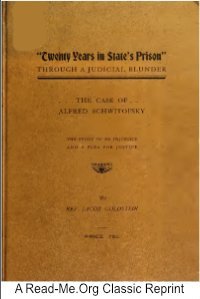By Henry M. Boies.
A study of the abnormal increase of criminals and the public burden of pauperism in the U.S. - the causes and remedies. THERE are four hundred and forty-six charitable, reformatory, and penal institutions in the State of Pennsylvania, inspected at least once each year by its Board of Public Charities. They have a wide variety of objects, methods, management, and inmates. The view which a member of this Board obtains, therefore, and the impressions he receives of pauperism and criminality are of a very general nature, inducing a consideration of the subject as a whole. Most of the literature of these subjects, on the contrary, is confined to particular and distinct phases of them. I have endeavored in this book to present this general view of the case as it appears in our country ; to emphasize the waste of human sympathy and public funds which results from what appears to be inconsiderate and misdirected methods of treatment ; to suggest not only possible improvements in these methods, but radical changes in direction ; and, finally, I have proposed a positive remedy, which, however people may disagree concerning its practicability.
New York: Putnam, 1893. 318p.













